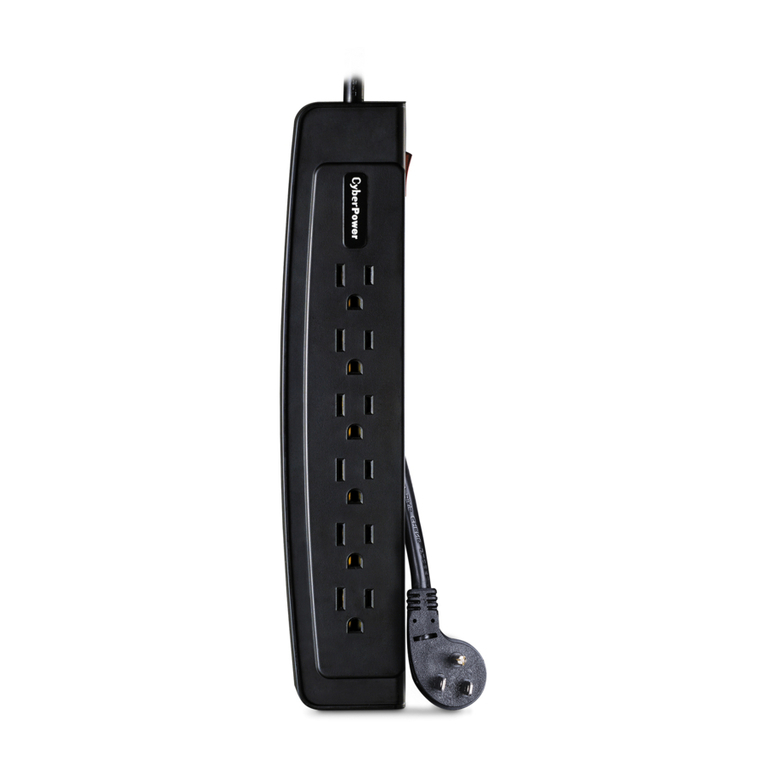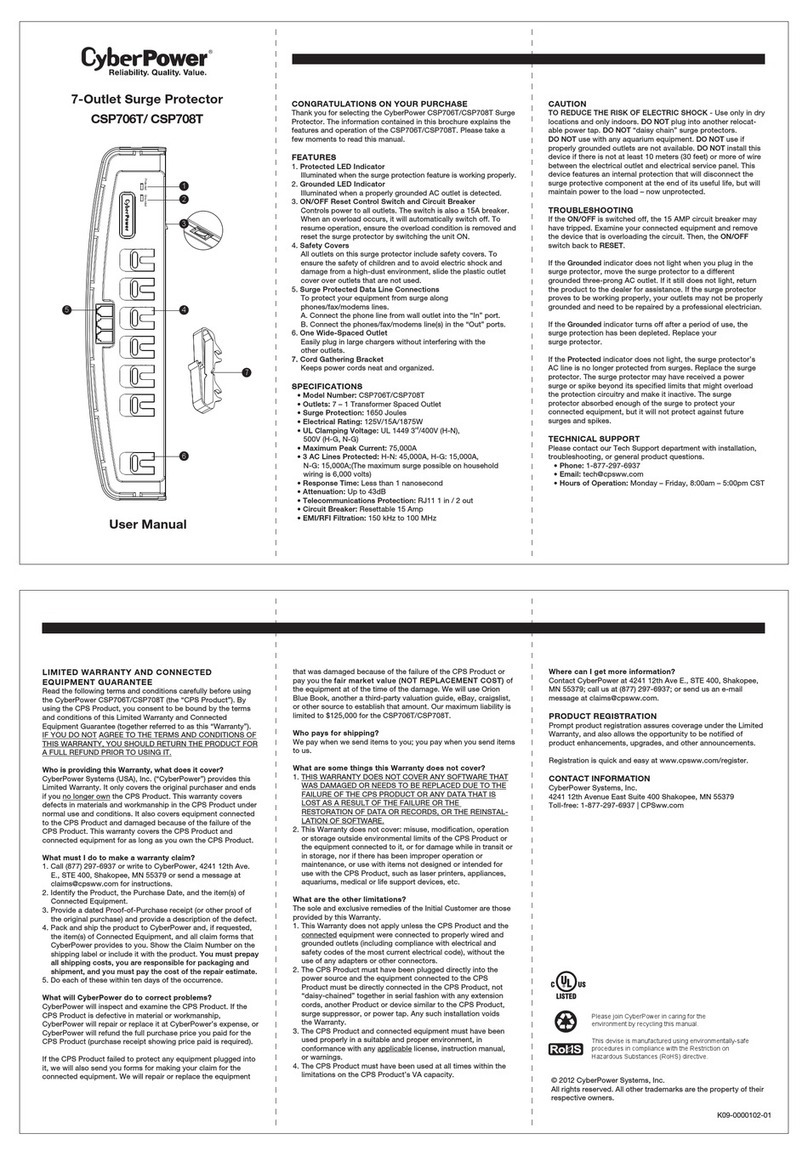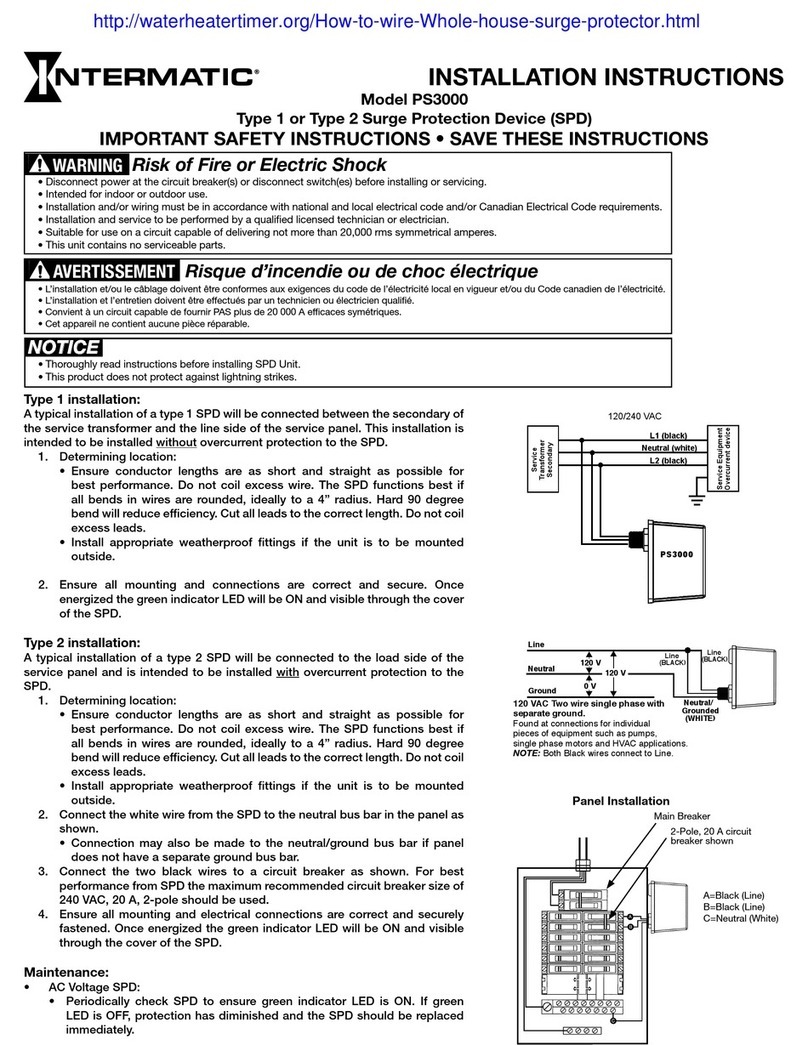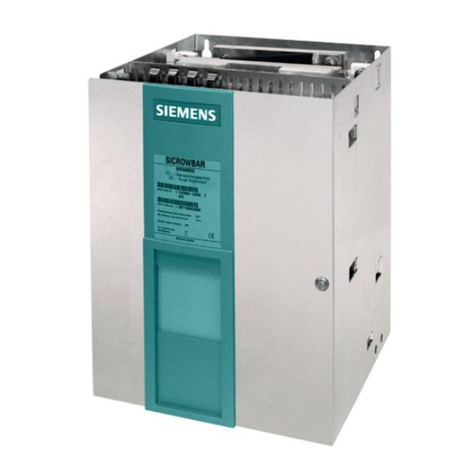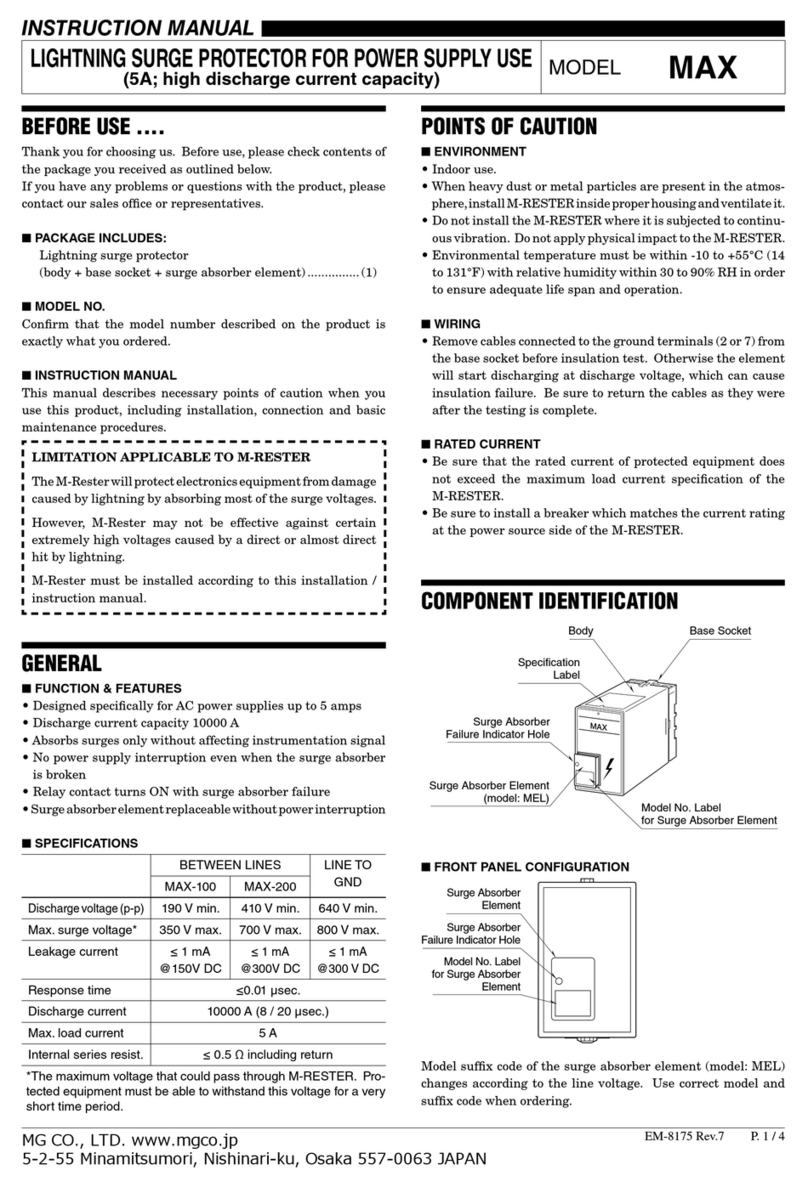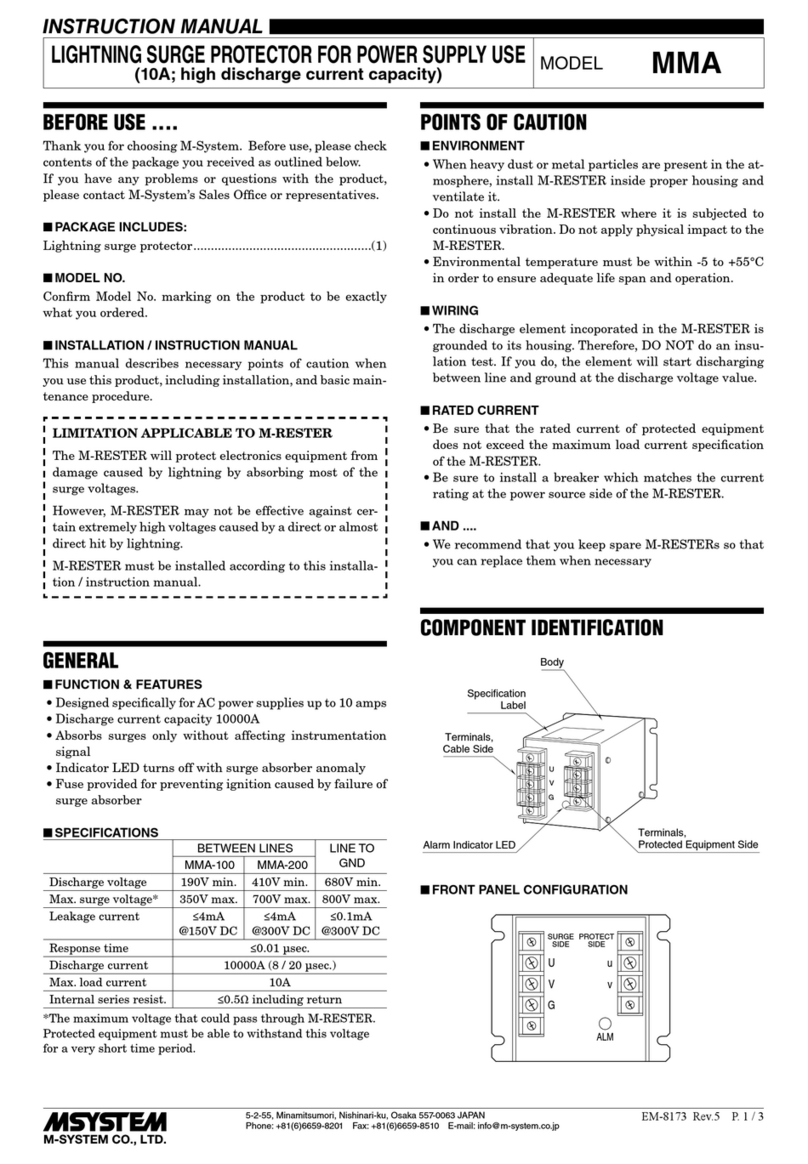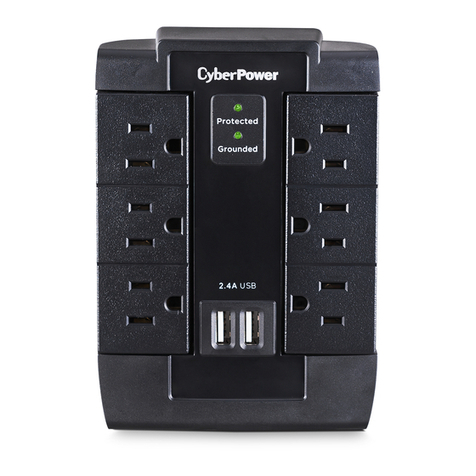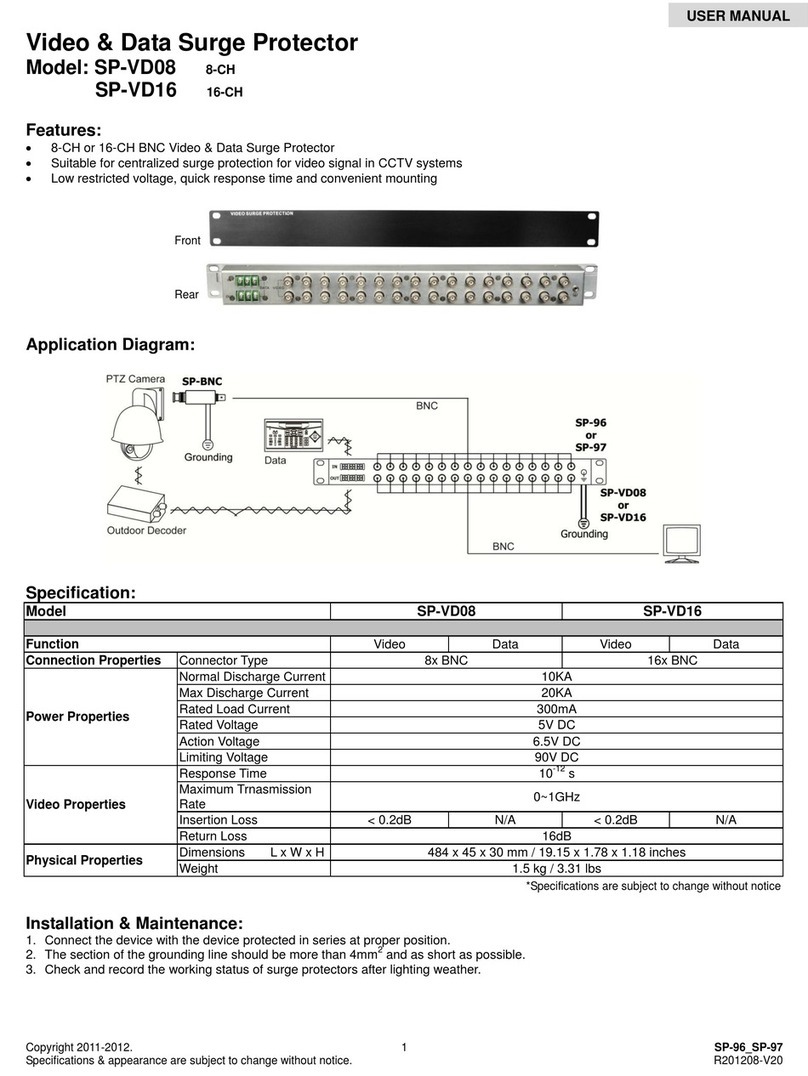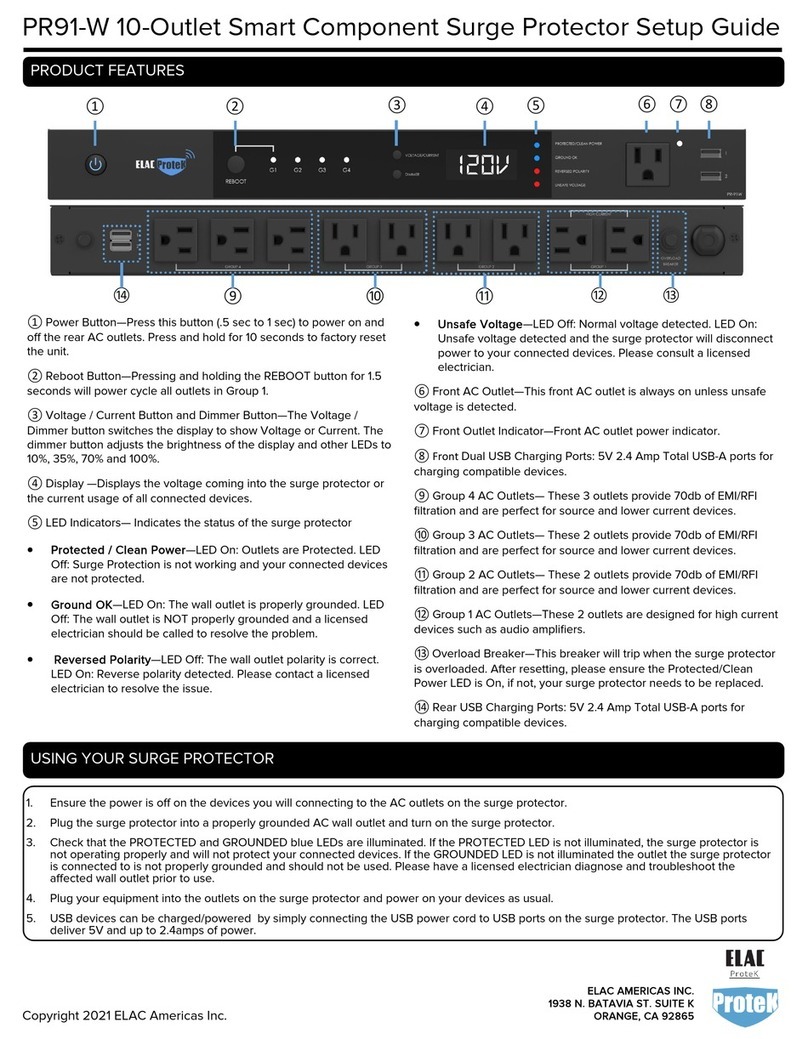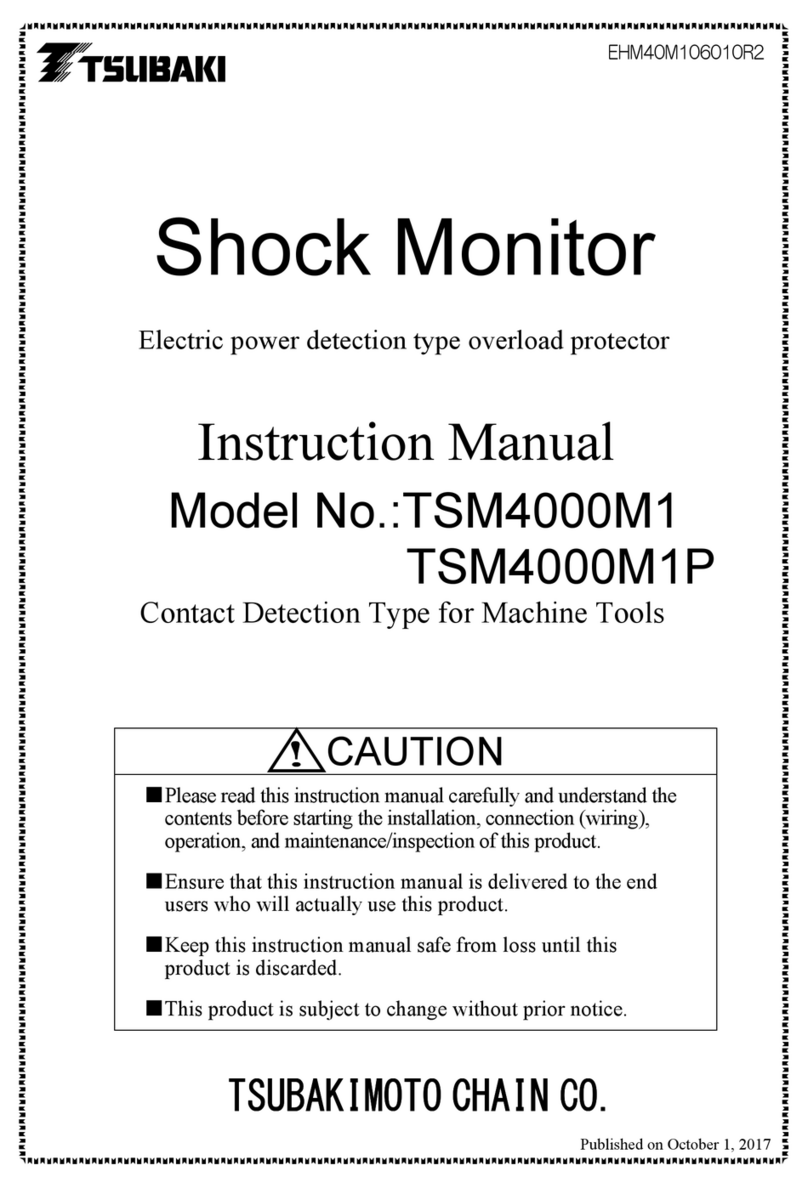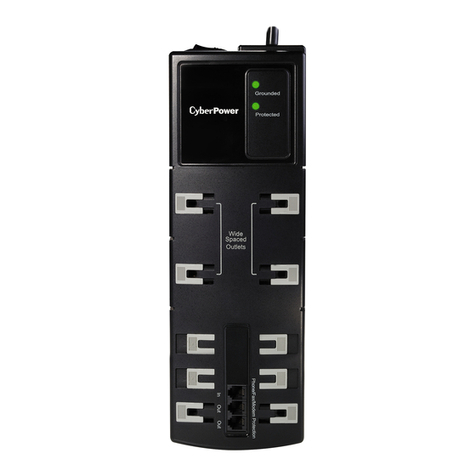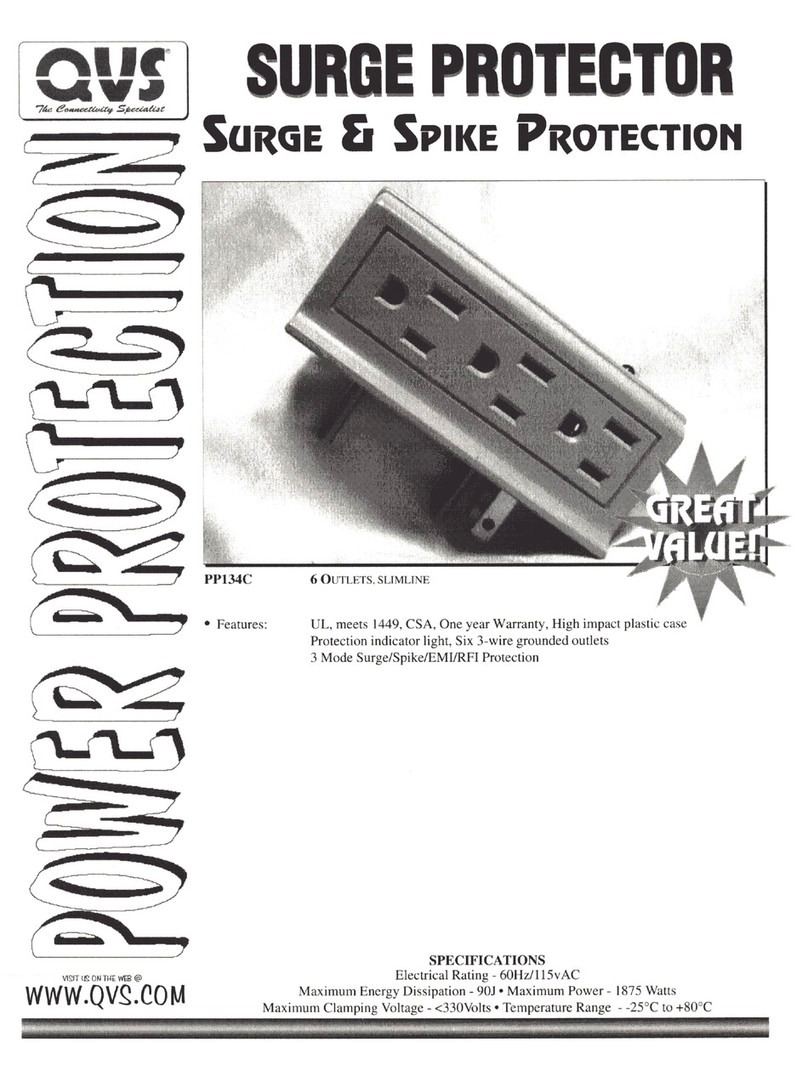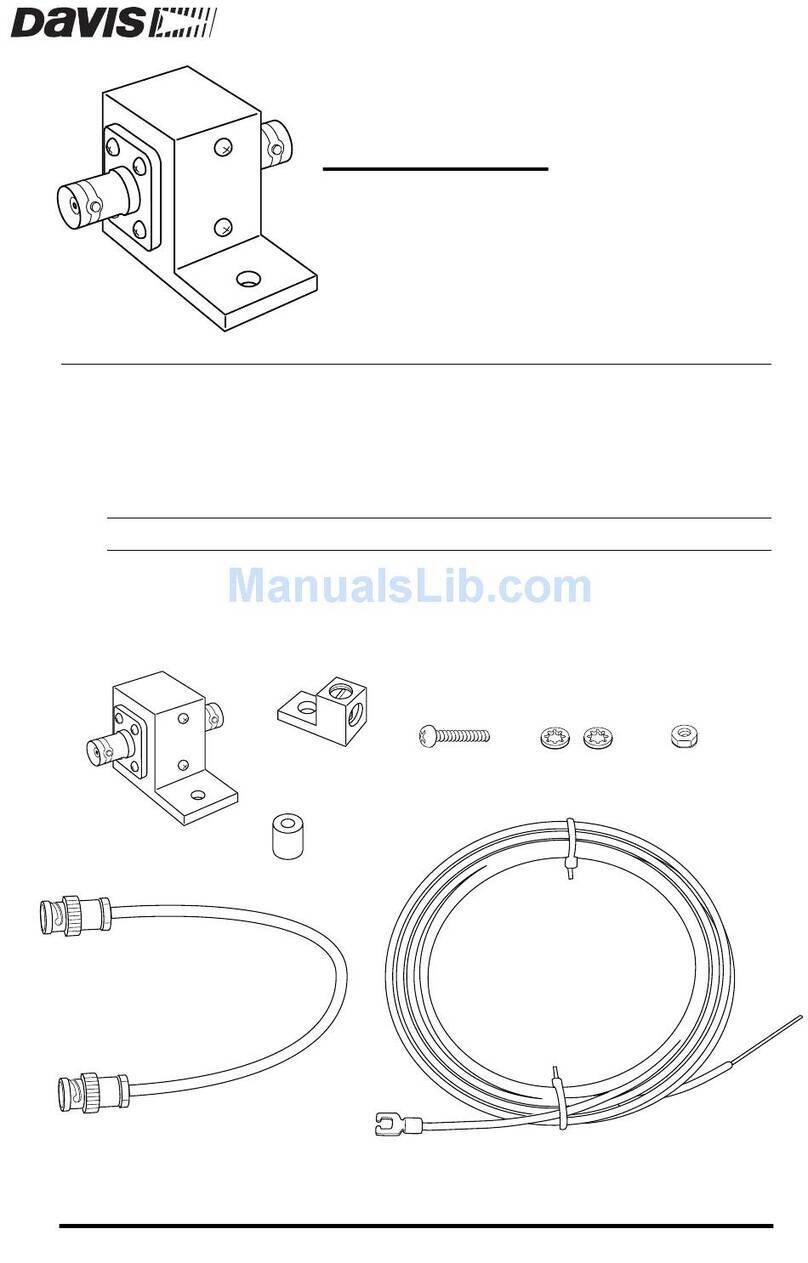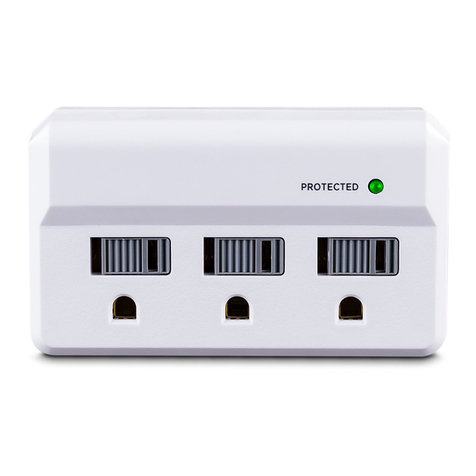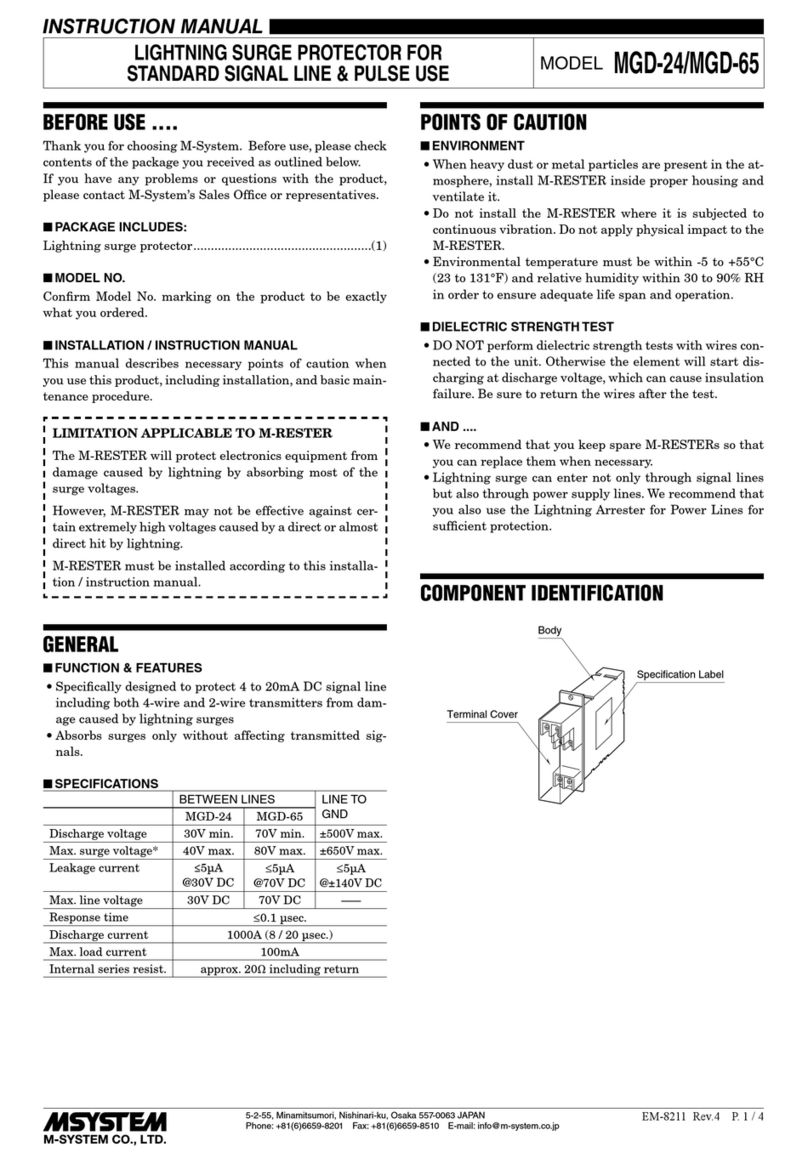
EM-8160 Rev.2 P. 1 / 5
MG CO., LTD. www.mgco.jp
5-2-55 Minamitsumori, Nishinari-ku, Osaka 557-0063 JAPAN
INSTRUCTION MANUAL
LIGHTNING SURGE PROTECTOR FOR PHOTOVOLTAIC SYSTEM
(750 V DC, 1000 V DC use) MODEL MATPH
BEFORE USE ....
Thank you for choosing us. Before use, please check con-
tents of the package you received as outlined below.
If you have any problems or questions with the product,
please contact our sales office or representatives.
■PACKAGE INCLUDES:
Surge protector....................................................................(1)
■MODEL NO.
Check that the model No. described on the specifications
matches the operational line voltage and other specifica-
tions as shown in ‘PERFORMANCE’ hereafter.
■INSTALLATION / INSTRUCTION MANUAL
This manual describes necessary points of caution when
you use this product, installation, and basic maintenance
procedure.
LIMITATION APPLICABLE TO MATPH
The MATPH will protect electronics equipment from
damage caused by induced lightning by absorbing most
of the surge voltages.
However, MATPH may not be effective against certain
extremely high voltages exceeding its discharge current
capacity (20 kA @ 8/20 µsec. waveform) caused by a di-
rect or almost direct hit by lightning.
The MATPH must be installed according to this installa-
tion / instruction manual.
PERFORMANCE
Max. continuous operating voltage (Uc, Line to line):
750 V DC for MATPH-750
1000 V DC for MATPH-1000
Discharge voltage (Line to earth): 500 V DC
Voltage protection level (Up):
• MATPH-750
Line to line: 2.5 kV (@In)
Line to earth: 1.8 kV (@In)
• MATPH-1000
Line to line: 3.3 kV (@In)
Line to earth: 2.1 kV (@In)
Maximum discharge current (Imax): 20 kA (8/ 20 μsec.)
Nominal discharge current (In): 10 kA (8/ 20 μsec.)
Response time:
Line to line: ≤ 4 nsec.
Line to earth: ≤ 20 nsec.
Leakage current: ≤ 1 mA
Insulation resistance: ≥ 100 MΩ with 500 V DC (line to
alarm output)
Dielectric strength: 2000 V AC @ 1 minute (line to alarm
output)
POINTS OF CAUTION
■CONFORMITY WITH EU DIRECTIVES
• Altitude up to 2000 meters.
• The equipment must be installed such that appropriate
clearance and creepage distances are maintained to con-
form to CE requirements. Failure to observe these re-
quirements may invalidate the CE conformance.
■INSTALLATION
• DANGER!
DO NOT install the MATPH at the point common to an
external lightning protection device such as a lightning
rod. The MATPH will be subject to the danger of direct
lightning.
• DANGER!
DO NOT perform an installation and wiring of the MAT-
PH during thunder storms.
• Indoor use.
• Be sure to house the MATPH inside an metal enclosure
for safety. Even though the MATPH is capable of with-
standing an induced discharge current expected in nor-
mal conditions, it is entirely possible to be hit by a certain
strong lightning exceeding its designed capacity. It is also
subject to a direct hit by a lightning. The MATPH will be
destroyed by such high lightning energy.
• We recommend to install the MATPH in a position where
the monitor LED is clearly visible to facilitate inspection
and maintenance.
• DO NOT install the MATPH where it is subjected to con-
tinuous vibration. Do not apply physical impact to the
MATPH.
• Environmental temperature must be within -25 to +80°C
(-13 to +176°F) and relative humidity within 30 to 90%
RH in order to ensure adequate life span and operation.
■HIGH TEMPERATURE
• DANGER!
The front parts of the surface may be hot. DO NOT grab
the sides of the module. When the MATPH’s discharge
element (zinc oxide element) gradually degrades, its
increased leakage current causes high temperature at
the surface of the MATPH, until the discharge element
is finally separated from the power line by the thermal
breaker. However, a part of the module may already be
too hot to touch safely if the module is near the end of its
life.
■DIELECTRIC STRENGTH TESTING
• Conduct the dielectric strength test with all power sup-
ply wires removed. The MATPH will start discharging at
the described discharge voltage if a test voltage is applied
with all power supply wires connected. It will result in an
insulation failure.
■AND....
• We recommend that you keep spare MATPHs so that you
can replace them quickly when necessary.

